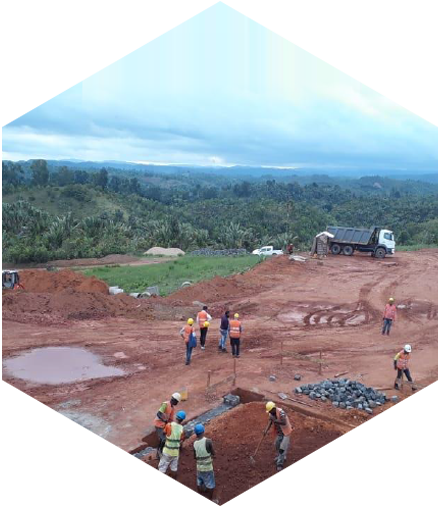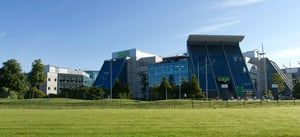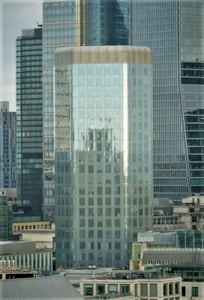Tirupati Graphite plc (LON:TGR) Executive Chairman and Managing Director Shishir Poddar caught up with DirectorsTalk for an exclusive interview to discuss the infrastructure update at Vatomina, the impact on net zero goals, their Sahamamy hydropower plant, progress of the acquisition of Suni Resources and the company’s growth trajectory over the next few years.
Q1: First off, could you just talk us through your recent announcement around the infrastructure at Vatomina and what it means for operations there?
A1: We had a tough time in the rainy season this year and that led us to think out of the box in how we can mitigate our operations from difficult conditions of nature and as a result, we decided to split our processing plants in two parts.
The first going right at the pit head so that we avoid transportation of ore from the mine site to the processing plant site, it’s just a kilometre or two distance, but then it’s quite a heavy load because the quantum of all that has to go for every tonne of graphite is 25 tonnes so it amounts to a lot of movement of materials.
So, long story short, as an effect, now we have our first pre-concentrate plant running at Vatomina and we shifted the first part at the pit head. We are pumping the pre-concentrate to the main plant so we avoid total transportation of solids on road.
The roads did get destroyed quite a bit during the rainy season and we got a slot over the last couple of weeks where we have reconditioned all the roads and across both Vatomina and all our roads are now operational.
So, yes, it’s a big decision for the long term, I think, and it be applied across our projects.
Q2: What impact will it have on your net zero goals and how much progress have you made with those?
A2: So, we calculated that we would save 75,000 litres of diesel every year for a 9,000 tonne plant. Ultimately, it’s going to go nine times of that so more or less you can see that as we reach our 84,000 tonnes target capacity in Madagascar over the next couple of years, we will actually be reducing our consumption of diesel by almost six to 700,000 litres a year.
Now, that much of diesel, we would not need to mitigate the emissions of that much of diesel burning to reach net zero, we reduce our emission upfront so it’s quite an important impact there. It is also an important impact on cost in the sense that it’s not only diesel that you use when you’re transporting, there are vehicles that are used and there are so many other costs associated to it.
So this is a blessing in disguise. The existing fleet will now be able to cater to ore mining more than what our current operations are so with our existing fleet, we should be able to increase the capacity that at the plant. This is something that we are currently working at, at Vatomina, without a very huge further investment and we set up a second pre-concentrate plant and use our existing final concentrate plant to process both. Hopefully it works out but yes, we will get back to the markets further as we conclude our investigations on that.
Q3: Can you share any updates on the construction of the Sahamamy hydropower plant and what that will ultimately do for production?
A3: That plant, the turbine and generator, which is the main part, installation is completed, the penstock which provides the water from the source reservoir up to the turbine generator, all that is done, everything is being tested. The canals are done, there are some places where we found leakages, some pressure issues, which are all being addressed so a new hydropower plant will be fully operationally in a few weeks from now.
Q4: You recently released news around the acquisition of Suni Resources with projects in Mozambique. How is that progressing and what will that acquisition do to your production profile?
A4: Ultimately, where do we see Tirupati going? We intend to be more or less 8% of global graphite demand in our capacities.
With the way graphite markets are slated to grow, and that’s already started happening, we see ourselves to be looking at a 4,000 tonne total capacity by end of this, now, for that much of capacity, you need resources, first thing.
Second thing, we also wanted to diversify our country risk in the sense of being dependent of working only in one location or one country, we thought it will be wise to have our resource and country risk diversified.
Third thing, the quality of graphite from that region of deposits is well established in the market for the whole range of applications of graphite so that way it’s useful position.
The position as far as the acquisition completion is concerned, final approval from the Ministry of Mineral Resources is required in Mozambique, that has been in process. There were certain points around that which we are addressing with the government and we are hopeful that it should conclude very shortly.
Q5: Now, I think you’ve hinted at this already, but what’s your view on the current market for graphite and subsequently, how do you view Tirupati Graphite’s growth trajectory over the next few years?
A5: This is something very vital. With the incremental EV adaptation that has happened since last year so the EV markets grew to double in 2021 as compared to previous year, and this year also, the growth looks similar.
I’ve come across recent news which says that across the world, the US, Europe, UK, every part of the world, EV adaptation has increased because of increased oil prices. So, there was a time when cost effectiveness-wise, EV was not the best choice, now EV has become a good choice even on the economic side so that evolution is happening faster. This definitely would lead to consumption of graphite because anode is made out of graphite and graphite is the single largest component in a lithium-ion battery.
In addition to this, we see a lot of growth in various other applications of graphite like in flame retardants, in composites, in heat sinks which are used for managing heat generated in electronic devices and similar.
Projections from various sources say that the total global consumption of graphite should exceed 5 million tonnes from the current 1.5 million tonnes a year by 2030. 5 million tonnes of graphite means three times more you need than you currently produce.
Sources are limited. As of today, China produces 70% of graphite requirement of the world, more or less. We have some production in Brazil, we have some in Madagascar and some in Mozambique, these are the primary. So, ultimately, additional graphite sources have to develop if we have to meet our energy transition targets or in any format.
We do see that this is not an easy task, which doesn’t mean this is not doable, we see ourselves playing a very large role in this. As I said, our target is to be 8% but if the globe needs more for us, we will not shy away from stretching ourselves to even grow larger than that.
Overall, I do see an upward pressure on the prices of graphite also in the coming quarters and I see that there would be more projects coming up also with the change that has been happening. Overall, the world needs additional sources of graphite and South-eastern African nations I see them as the primary region from which the world will meet its graphite needs, thus Madagascar, thus Mozambique for us.







































